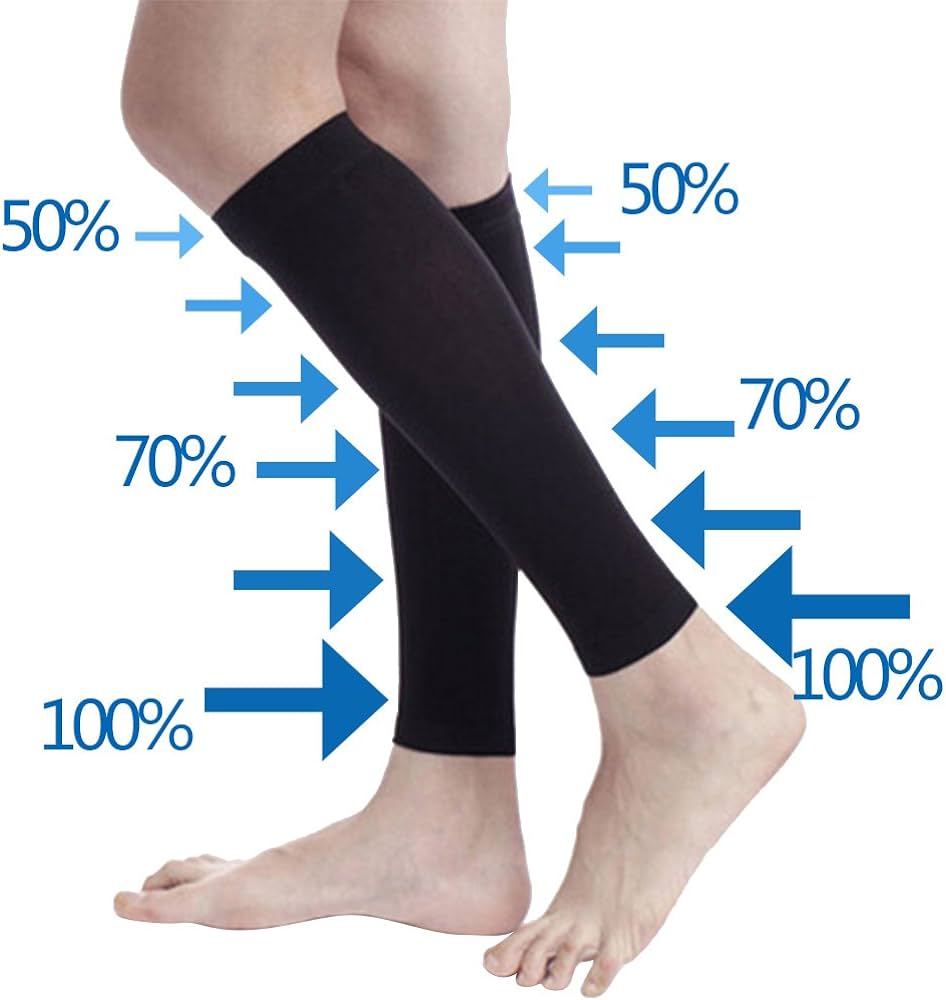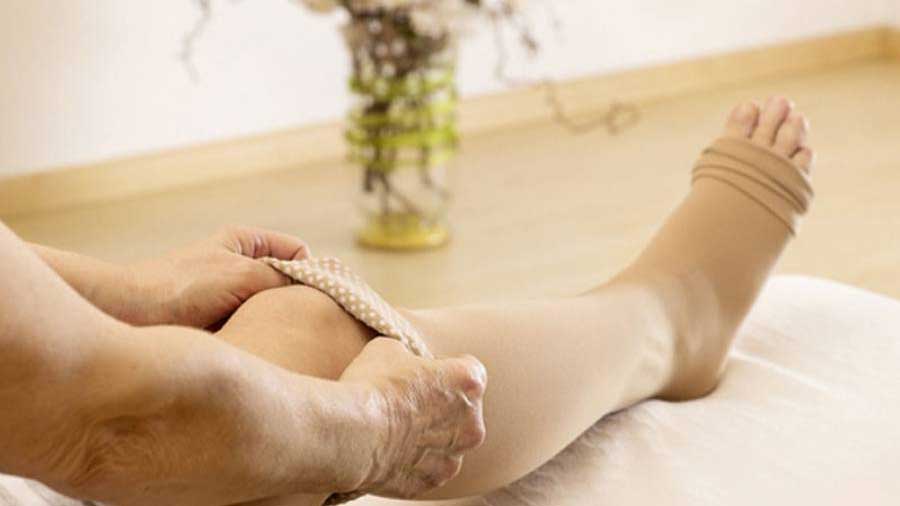Do Compression Socks Help with Sciatica
Introduction
Pain, which radiates along the sciatic nerve running from the lower back to each leg, characterizes sciatica. It is a common and often debilitating condition. This condition can be caused by a variety of factors, including a herniated disc, spinal stenosis, and even muscle spasms.
Although traditional treatments such as medication, physical therapy, and surgery are commonly prescribed, there is growing interest in alternative methods such as the use of compression socks to help with sciatica.
In this comprehensive guide, we delve into the world of compression socks and examine whether they can truly reduce symptoms for sciatica sufferers.
Understanding Sciatica
Before delving into the potential benefits of compression socks, it’s important to understand the nature of sciatica. Sciatica can manifest as sharp, stabbing pain, tingling, or numbness in your lower back, buttocks, or legs. Inflammation and pain are often induced by compression or irritation of the sciatic nerve
Compression Socks: Overview
Compression socks are special clothing designed to improve blood circulation and reduce leg swelling. It is usually tightest at the ankle and gradually loosens as you move up the leg. The main purpose of compression socks is to facilitate the backflow of blood to the heart, thereby preventing blood from pooling in the lower extremities.
These compression socks are often associated with conditions such as deep vein thrombosis and varicose veins. Still, their potential benefits to help with sciatica have become an area of interest for both patients and medical professionals.
Mechanism of Compression Socks
To understand how compression socks can reduce sciatica, it is important to examine the underlying mechanisms. Compression socks apply pressure to the veins in your legs, improving blood circulation and reducing fluid buildup. This pressure prevents blood from pooling in the lower leg, reducing swelling and discomfort. Additionally, improved blood flow supports the efficient removal of waste products from tissues, promoting a healthier environment for nerve function.
Benefits of Compression Socks for Sciatic Nerve Pain
Improved Blood Circulation
Compression socks improve blood flow and reduce inflammation around the sciatic nerve. Improving blood circulation improves the supply of oxygen and nutrients to the affected area, accelerating the healing process.

Swelling Reduction
Compression socks reduce swelling in the legs and hips by preventing blood pooling and reducing fluid retention. This reduction in swelling decreases pressure on the sciatic nerve, resulting in less pain.
Muscle and Joint Support
Compression socks support muscles and joints and help people with sciatica. Increased stability reduces strain on your lower back and legs, potentially reducing pain and discomfort.
Temperature Regulation
Some compression socks are made with materials that regulate temperature. Maintaining optimal temperature in the affected area improves health and reduces nervous irritability.
Improve Your Posture
Wearing compression socks improves your posture, which is very important for people with sciatica. Correct posture reduces pressure on the spine and sciatic nerve, which reduces pain and prevents further inflammation.
Training Enhancement
Athletes commonly use compression socks to improve performance and expedite recovery. People with sciatica can wear compression socks during physical activity to provide additional support and improve muscle function.
Medical Compression Socks that Help with Sciatica
In recent years, manufacturers have introduced medical compression socks to the market, specifically designing them for individuals with various medical conditions, including sciatica. These socks, made from medical-grade materials, often provide higher levels of compression, ensuring durability and effectiveness.
Higher Compression Level
Medical grade compression stockings typically provide a higher compression level compared to regular compression stockings. It is said that increased pressure better supports blood circulation, reduces swelling, and provides better relief from sciatica symptoms.
Graduated Compression

Graduated compression is considered one of the important features of medical compression stockings. This means that compression at the ankle is strongest and gradually decreases as leg movement increases. This design helps propel blood upwards, allowing efficient circulation and reducing the risk of blood pooling in the lower extremities.
Quality Materials
Manufacturers often make medical-grade compression socks from high-quality materials that meet specific medical standards. These materials not only ensure the sock’s durability but also contribute to its effectiveness by providing consistent compression and support over time.
Prescription or Custom-Made Options
In some cases, your healthcare provider may prescribe medical compression stockings tailored to your specific needs. Customized options take into account factors such as leg size, shape, and symptom severity to ensure a personalized and effective solution to treat sciatica.
Considerations and Precautions
Users should exercise caution when using compression socks, particularly medical-grade ones, as they hold promise in treating sciatica symptoms. Here are some considerations and caveats to keep in mind.
Consult a medical professional
It is important to consult a medical professional before using compression stockings, especially medical socks. They will assess the severity of your symptoms and provide advice on appropriate compression levels and duration of use.
Correct Size and Fit
Correct size and fit are even more important when using medical compression stockings. Ill-fitting socks can cause discomfort and worsen existing problems. Expert advice ensures the right fit and compression level for your individual needs.
Gradual Adjustment
People who use compression therapy for the first time, especially at higher levels, need to gradually adjust their body. Start with a low compression level, allow your body to adapt to the compression, and gradually increase the compression level to minimize discomfort.
Monitoring Response
Regular monitoring of response to compression therapy is essential. If you experience side effects or are not achieving the desired effect, it is important to contact your healthcare provider for adjustments or further advice.
Frequently Asked Questions
Q1: Can compression socks completely cure sciatica?
A1: Compression socks are not a cure but they are a comprehensive treatment that can be used as part of a treatment plan to help with sciatica. These can help reduce symptoms and improve quality of life, but the underlying cause requires professional evaluation and treatment.
Q2: How long should I wear compression stockings to relieve sciatica?
A2: Wear time will vary depending on individual circumstances. Please consult your doctor for individual advice. Usually worn during the day and taken off at night.
Q3: Can I wear compression socks while training?
A3: Yes, many people wear compression socks during exercise to provide support and promote blood circulation. However, consult your doctor to see if it is appropriate for your particular case.
Q4: Are there any side effects from wearing compression stockings?
A4: Although generally safe, improper use can cause discomfort, skin irritation, and other problems. Proper size, fit, and guidance from a medical professional can minimize potential side effects.
Q5: Can I wear compression stockings with other treatments for sciatica?
A5: Compression stockings can complement other treatments such as physical therapy and drug therapy. Consult with your healthcare provider to ensure a tailored and effective approach.
Q6: Are compression socks suitable for everyone with sciatica?
A6: Not everyone benefits equally from compression stockings. It depends on the specific characteristics of the disease. Consultation with a medical professional is essential to determine suitability.
Conclusions
Medical compression socks are a promising tool to help people with sciatica, providing high levels of compression and customized support for people with sciatica. Although the potential benefits are great, it is important to approach use under the guidance of a medical professional to ensure proper sizing, fit, and adherence to recommended guidelines.
Compression stockings, especially when designed according to medical standards, are an important addition to a comprehensive sciatica treatment plan by providing support, promoting circulation, potentially relieving symptoms, and improving quality of life. As with any treatment approach, individual responses may vary, highlighting the importance of individualized care and ongoing communication with your healthcare provider.







